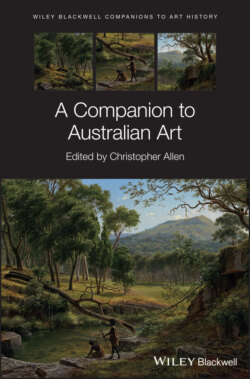Читать книгу A Companion to Australian Art - Группа авторов - Страница 29
The National Gallery of Victoria
ОглавлениеFrom this point Melbourne began to assume a kind of cultural and artistic pre-eminence. As the city matured, and as private wealth grew, with increasingly grand buildings funded by gold, its civic leaders, led by the irrepressible and ambitious Sir Redmond Barry,8 turned their attention to developing appropriate cultural institutions. In 1861 Melbourne’s – and, indeed, Australia’s – first public art gallery was established (the opening chosen to coincide with Queen Victoria’s birthday) physically situated within the new Public Library building,9 and under the jurisdiction of its board. The early collections of the NGV were typical of their time – a mix of plaster casts of famous antiquities, drawn particularly from the British Museum collections, period marble sculptures, and a miscellany of paintings of various types, mainly British but with some works – principally landscapes and portraits – produced in Australia. The important issue was that the government of the colony was now prepared to assume responsibility for funding Melbourne’s new Museum of Art.
In 1863 the government appointed a Commission on the Fine Arts to “Inquire into the subject of the promotion of the Fine Arts in this our said Colony, and to … submit unto us a scheme for the formation, conduct and management of a Public Museum … and Schools of Art for our said Colony.” Six years after James Sheridan Moore had pleaded for the government of NSW to undertake something similar, to no avail, an ambitious project, to be funded by government, was launched in Melbourne. The eminent painter Sir Charles Eastlake, President of the Royal Academy and director of the London National Gallery, accepted the task of allocating the relatively modest sum of £2000 p.a. made available by the government of Victoria for acquisitions, and he sensibly advised that such a limited sum could only be effective if confined to acquiring contemporary works – and those not necessarily by the most distinguished and sought-after artists. The collections, however, began to grow, and new dedicated spaces for sculptures and pictures were constructed. In 1869 an Act of Parliament formally constituted The National Gallery of Victoria, including its School of Art, which opened in 1870. In due course, most of the public fine art galleries in the capital of each self-governing colony adopted the word “national” in its title, expressing the pre-Federation quasi-independent status of each colony, but also in conscious imitation of London, which had established its “National Gallery” in 1824.
Right from the start one can identify the stirrings of one of the great, continuing debates of Australian public art museology – the role and status of art produced in Australia, as opposed to the rest of the world. As the collection of mainly British art began to evolve, an early decision of the Commission on Fine Arts, in order to embed art and design as central to the colonial cultural experience, was to allocate £200 (effectively, 10% of the budget) for the winner of a competition for a locally produced work of art. The first major “Australian” work10 to enter the collection was Nicholas Chevalier’s The Buffalo Ranges, acquired in 1864, a good quality realist landscape of a snow-capped mountain range, selected from what was generally regarded as a poor field, with the colony’s finest artist, Eugene von Guérard, abstaining from competing. Eastlake had made it clear that Victoria’s modest acquisitions budget also precluded its public fine art gallery from acquiring major old and modern masters. Conscious of this, in 1869 – the year of the National Gallery of Victoria’s formal incorporation – the trustees embarked upon a huge Loan Exhibition,11 the aim of which was to demonstrate the developing wealth and cultural maturity of the colony through exhibiting the richness of private collections for the benefit of an increasingly engaged public. The exhibition’s content reflected earlier loan collections, but the context and marketing were significantly different. While the quality of works contributed varied considerably, with the same nostalgic emphasis on British landscapes, and a large number of copies of well-known old masters, many high quality works were included, and this perhaps reflected the influence of the new Melbourne Museum of Art.
As the years passed, a kind of modus operandi evolved, given focus by the establishment of the National Gallery of Victoria School of Art (opened in 1870) which in its early years was seen as being at least as important as the art collection. The first Master of the Painting School, Eugene von Guérard, was thus also appointed curator of the collection, almost as a secondary role. Over the years acquisitive prizes and scholarships were created to support the student body, and those who had won prizes (especially the annual Travelling Scholarship for study in London and Paris) were admired and supported above the others. Success in London and Paris was seen as the ultimate test and accolade.
